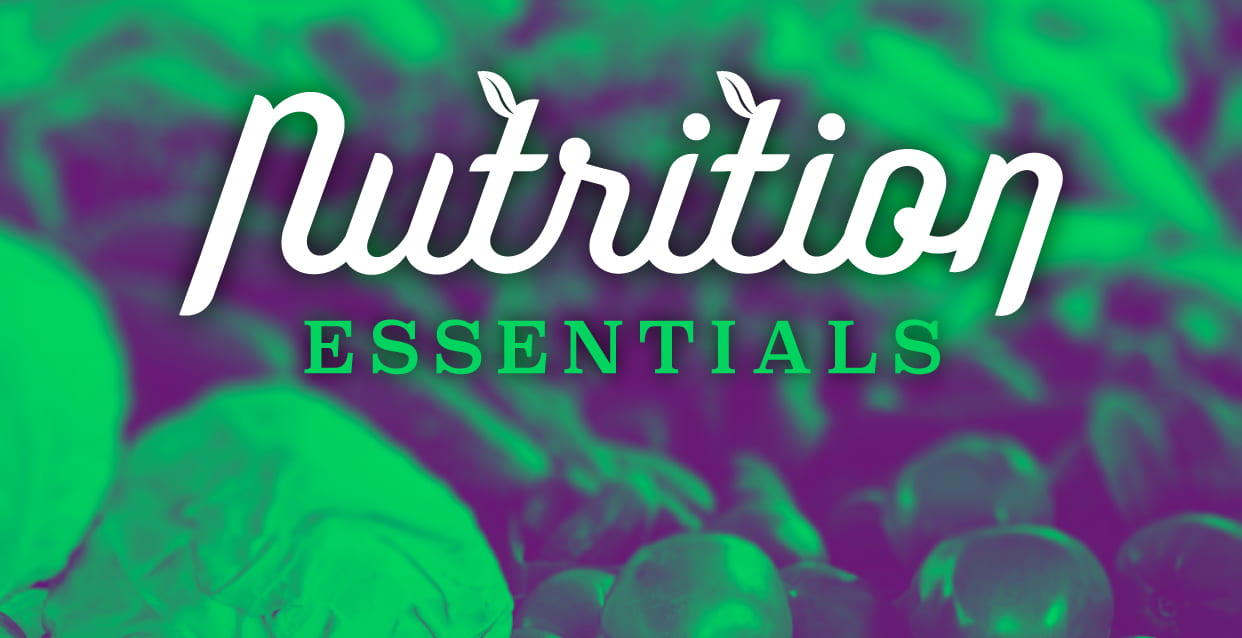This series will provide a brief overview of the fundamental nutritional concepts that underpin all dietary interventions. With a greater understanding of the fundamental nutritional concepts, we can begin to track and understand how to adjust our diets to achieve and desired outcomes in a more efficient manner, while giving us the tools to critically understand all dietary interventions.
What makes up a diet?
Your diet is composed of the foods and beverages you consume; these foods and drinks are composed of protein, fats, carbohydrates, and occasionally alcohol. Your body breaks down each of these nutrients into its essential parts to create new structures for the body to build and repair, create new molecules like hormones and neurotransmitters, and break down to produce energy. For every gram of a nutrient consumed, our bodies extract approximately the following amounts of energy:
- Protein: 4 calories per gram (4 cal/g)
- Carbohydrates: 4 calories per gram (4 cal/g)
- Fats: 9 calories per gram (9 cal/g)
- Alcohol: 7 calories per gram (7 cal/g)
*Technically, the above values are rounded calculations, but functionally these amounts work
For this article, we will set out some operational standards to conceptualize a few terms generally used in marketing and studies.
- High protein– if the total number of calories from protein is at least 20% of the food’s caloric load.
- High fiber– if the total number of calories from fiber is at least 20% of the food’s caloric load.
These terms are often used to describe foods that are not necessarily up to this standard. Note that terms such as: “A Source of Fiber,” “Source of Protein,” or other similar marketing terms are not required to fit a specific definition or threshold of a macronutrient and can make food seem “healthier” than it is.
What makes foods “healthy” or “unhealthy”?
Prominent factors such as age, genetics, sex, body size, socioeconomic status, and many others determine everyone’s nutritional requirements and their body’s specific needs. Our sleep status, activity level, stress levels, and many other factors can determine our body’s short-term (daily) nutritional needs. To make this most applicable, I want to talk about broad concepts and how they can generally apply to our diets.
Caloric density
Caloric Density is not talked about as much as I would like to hear in social media or health in general. The general concept breaks down to how many calories do I get for a specific volume, or weight, of food. How full does this food make me feel versus how many calories I have consumed? Common foods that are high in caloric density tend to be highly processed foods like cookies, crackers, pasta, to name a few. While high caloric density foods are not inherently “bad,” these types of foods make it very easy to overconsume calories. You may want to minimize how many high caloric density foods are included in your diet to manage your weight.
Foods that tend to be lower in caloric density will tend to be vegetables, fruits, seeds, nuts, and similar foods that take a while for our body to digest. As these foods take longer to digest, they tend to keep us full longer and minimize our long-term hunger, and these foods tend to be higher in fiber. A specific note I want to make here is that meats can fit into both the high and low caloric density categories; think of a strip of bacon versus a chicken breast; the fatty bacon slice gram for gram will have more calories in it than the chicken. The chicken will have a more significant percentage of its caloric load coming from protein than bacon. Chicken at 4 cal/g protein will have a less substantial portion of its caloric load coming from fat than bacon at 9 cal/g. This disparity typically leads to over-consuming higher fat foods, especially when mixed with sugars, think maple syrup and bacon.
Manage your diet
Generally speaking, when consumed in moderation, specific foods will not be detrimental to your health relative to your dietary needs. If you are not interested in creating and tracking macronutrients and calories, you can use some general rules to manage your diet. Eat at least half the volume of your plate as vegetables, have a variety if you can; focus on eating lean meats, such as chicken, turkey, fish, or lean beef, there are many others, and pretty much all vegan proteins are lean. Using your fats to cook foods by adding olive oil or other vegetable oils will give flavor to your recipes while giving you polyunsaturated fatty acids. These acids have health benefits and give you fats you will need for healthy hormonal function. These basic ideas will increase the amount of fiber in your diet, increase the amount of protein and minimize your hunger. Further, you can listen to your body’s natural signals allowing for weight and prolonged digestion regulation, meaning you will have less “insulin spikes” or ups and downs in energy.
One side effect in increasing fiber and protein intake in the short term can lead to increased gas; this is usually temporary as our body’s enzymes begin to adjust to breaking down fiber and protein more efficiently.
In the next article we will look at understanding food labels.
Visit our website for information on training consultations, virtual coaching, plus individual and group personal training. If you’re ready to work with one of our Exercise Specialists, fill out the consultation form so we can connect you with the best trainer to help you meet your goals. Sign-up to receive our monthly newsletter for news, announcements, program information, swim tips, and exercise demos.
by Kyle Babiuk
Kyle is a Bachelor of Kinesiology Graduate and is certified with the Canadian Society for Exercise Physiologists. He specializes in movement analysis, chronic disease management through exercise and strength programming. He’s worked with athletes, individuals with chronic diseases, along with many other individuals trying to achieve their health and fitness goals.



